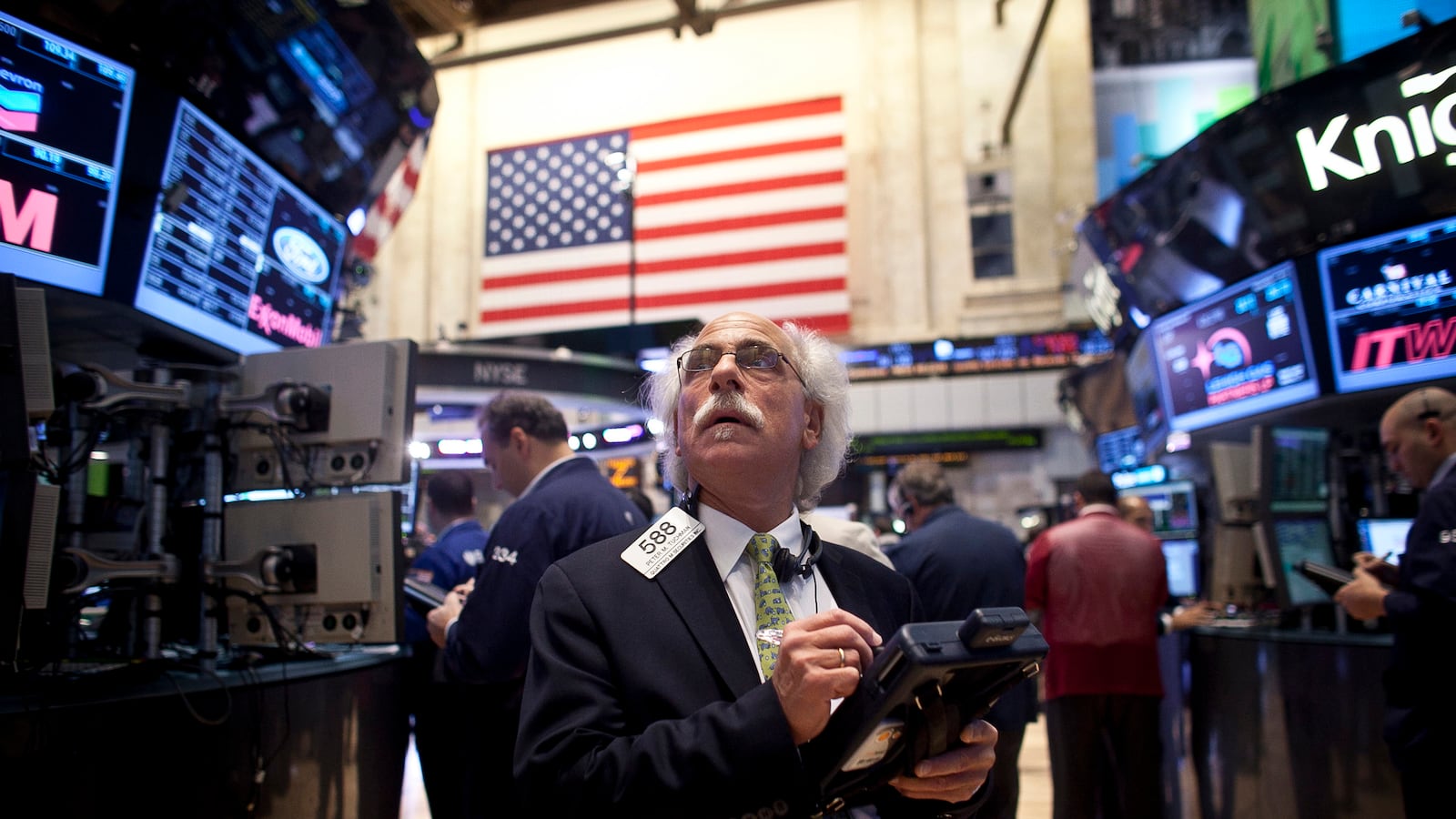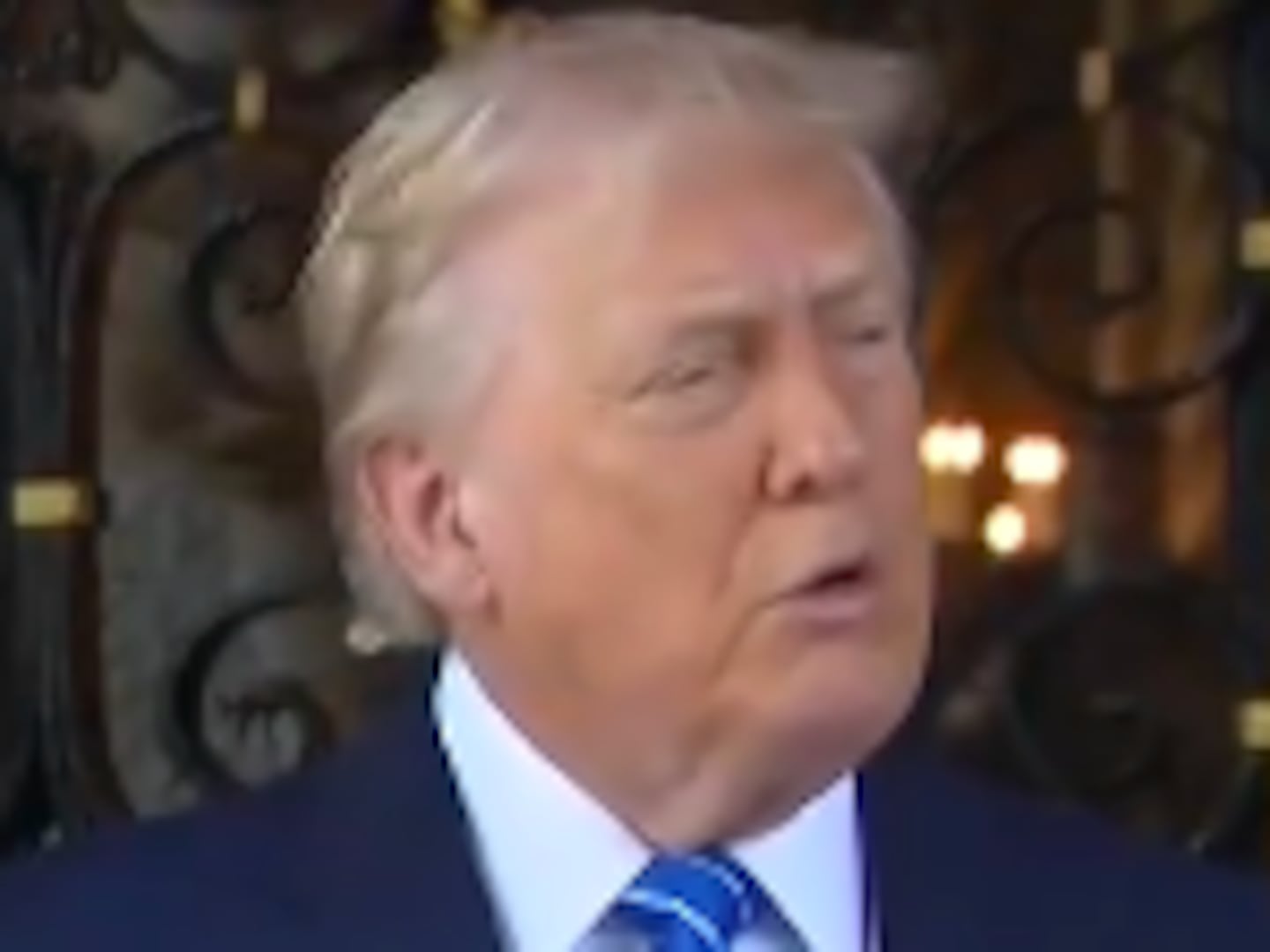Once again President Obama and the congressional Republicans are in a showdown over the debt: the GOP wants to preserve low tax rates and enact large spending cuts, while the president wants less severe cuts and higher tax revenues from high earners. And just like last year’s tussle over the debt ceiling, ratings agencies like Fitch, Standard & Poor’s, and Moody’s are threatening to ding America’s sovereign credit rating if a long-term deficit deal isn’t reached. The only problem is that it’s unclear who, if anyone, cares about what the major ratings agencies have to say.
Last year, S&P knocked the U.S. down from AAA to AA following the last-second raising of the debt ceiling and the start of the legislative process that led us to the edge of the fiscal cliff—a move that generally signals to investors that they should start dumping bonds. But the markets responded by ... purchasing more Treasury debt.
Interest rates on 10-year Treasury notes, the widely accepted benchmark for the credit-worthiness of the United States, were 2.82 percent on July 29, 2011, two days before President Obama announced he had reached a deal with congressional leaders to raise the debt ceiling and avert a U.S. debt default. When the bond market closed the Friday afternoon before the downgrade announcement, the 10-year interest rate had fallen to 2.58 percent. The following Monday, it fell to 2.40 percent. And since then, the interest rate on the 10-year has fallen further. It stands at just over 1.6 percent today.

So as the debt mounted, and as Congress and the White House refused to make a deal, investors proved willing to buy more and more U.S. debt—despite the sharply lower interest payments they receive. Just after the downgrade Warren Buffett, the world’s most famous (and successful) investor, told Bloomberg Television that the U.S. deserves a “quadruple A” rating.
The U.S. is now, once again, staring into the fiscal abyss. If Congress and the White House can’t cut a deal by Jan. 1, about $600 billion of spending cuts and tax hikes will go into full effect for 2013. Should this happen, the stock market could take a big dip. And if the cuts and tax hikes are maintained throughout the year, the economy could be dragged back into recession, according to the Congressional Budget Office.
One major ratings agency, Fitch, strangely believes that this lurch toward deficit reduction will make U.S. government bonds less attractive. It has warned that it will lower the U.S. credit rating from AAA if no deal is reached come Jan. 1. Fitch specifically acknowledges that it might counterintuitively lower its outlook for U.S. debt in response to the deficit being slashed. But Fitch apparently seems to be grading on style points. It argues that “a credible deficit-reduction plan [is] necessary to underpin economic recovery and confidence in the full faith and credit of the U.S.” Merely going over the cliff, said Fitch in its warning released last week, “would not fully address the longer-term drivers of higher public spending and the relatively narrow and volatile tax base.”
But if one of the major ratings agencies says the U.S. is no longer AAA and a recession looms, what will happen to the U.S. debt? In all likelihood, investors won’t be able to get enough of it. “I think you’ll probably see a replay of what you saw in summer in 2011, a big sell-off in equity markets into the safety of U.S Treasuries,” says Paul Edelstein, director of financial economics at IHS Global Insight.
In fact, what’s been driving interest rates on U.S. debt to such low levels is precisely this dynamic: the U.S. economy is still sluggish and the world economy is doing worse, meaning that the risk-free investments the Treasury offers are attractive despite the low interest rates. This puts the ratings agencies in a tough position: no matter how much they try to warn us that political gridlock could make it impossible to bring down the debt over the long term, investors keep on buying what the Treasury offers, and are willing to pay even more for it.
Steve Bell, a former Senate Budget Committee staffer and investment banker who is now at the Bipartisan Policy Center, says that “we’ve warned people a lot about what will happen if we don’t get spending and tax balanced.” But every time, interest rates on U.S. debt continue to fall. He said that when he goes to the Hill, the threats no longer mean much: interest rates are low despite S&P’s downgrade in August 2011, and there are no signs of inflation.
Bill Gross, founder and co–chief investment officer of PIMCO, the gargantuan bond investor, calls the U.S. the “cleanest dirty shirt,” because its debt is still a better investment than anything comparable in Europe or the rest of the world. Gross told CNBC that “America is a safe haven. [It has] everything an investor desires: a relatively low debt, a reserve currency status.” Like many other big-time investors, Gross is a public advocate for deficit reduction and has raised concerns about the sustainability of government debt. But he’s still buying. According to Dow Jones, Gross has increased one PIMCO’s bond fund’s holdings of U.S. debt by a third in October.
Steve Bell says that only a deep and prolonged equity slump, along with higher interest rates on U.S. debt, will move people to demand a big, long-term fix for the deficit. Otherwise, he said, even sharp, short-term drops in the stock market will likely be matched by more buying of Treasuries and interest rates will remain low. Said Paul Edelstein of ISH Global Insight: “We’re in a weird equilibrium, where even though the concern is the debt, the markets still keep buying it because they think it’s the safest thing in town.”
A ratings downgrade, Bell said, would be the absolute last thing to move the needle as far as urgency over the deficit. “People only react to pain and pleasure, until the pain gets greater. People will put off tough choices,” Bell said. Ratings downgrades, it turns out, just aren’t all that painful.






